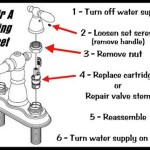Why Does My Bathroom Sink Keep Clogging?
A consistently clogged bathroom sink is a common household frustration. The seemingly simple act of washing hands or brushing teeth can be quickly derailed by slow draining or, worse, a completely backed-up sink. Understanding the common causes of these blockages is the first step towards prevention and effective solutions. Several factors contribute to recurring clogs, ranging from the type of debris entering the drain to the plumbing's configuration and maintenance habits.
Recurring clogs are not only inconvenient but can also signal more significant underlying plumbing issues. Ignoring a slow-draining sink can lead to the accumulation of debris further down the drainpipe, potentially resulting in a more difficult and expensive repair. Moreover, standing water in the sink can harbor bacteria and mold, posing health risks. Therefore, identifying the root cause of the problem and implementing appropriate preventative measures is crucial for maintaining a healthy and functional bathroom.
The frequency of clogs in a bathroom sink can also be influenced by the number of people using the sink and their habits. A household with multiple occupants is likely to experience more frequent clogs compared to a single-person household, simply due to the increased volume of materials entering the drain. Similarly, certain hygiene practices, such as rinsing long hair in the sink or discarding dental floss down the drain, significantly increase the likelihood of blockages.
Hair Accumulation as the Primary Culprit
Hair is one of the most prevalent causes of bathroom sink clogs. Strands of hair, whether from washing, shaving, or brushing, readily enter the drainpipe. The problem is compounded by hair's tendency to cling to the rough interior surface of the pipes and other debris already present. This creates a tangled mass that progressively restricts water flow.
The texture and length of hair also play a role in its clogging potential. Long, thick hair is more likely to snag and accumulate compared to short, fine hair. Curly or textured hair can interlock more easily, creating denser and more obstructive clumps. Furthermore, hair often combines with other substances, such as soap scum and toothpaste residue, forming a sticky, stubborn blockage that is difficult to dislodge.
Prevention is key when dealing with hair-related clogs. Installing a mesh screen or strainer in the sink drain is a simple yet effective way to capture hair before it enters the plumbing system. Regularly cleaning this strainer to remove accumulated hair is essential to maintain its functionality. Avoiding practices that directly introduce hair into the drain, such as rinsing hairbrushes or shaving without a drain guard, can also significantly reduce the incidence of clogs.
If a hair clog has already formed, several methods can be used to address it. A bent wire hanger, carefully inserted into the drain, can often be used to snag and remove the clump of hair. Alternatively, commercially available drain snakes, designed for reaching deeper into the pipe, can be employed. Chemical drain cleaners can be used as a last resort, but caution should be exercised due to their corrosive nature, which can potentially damage plumbing over time. Always follow the manufacturer's instructions carefully when using chemical drain cleaners, and ensure adequate ventilation.
Soap Scum and Product Buildup Contribution
Beyond hair, soap scum and product buildup are significant contributors to recurring bathroom sink clogs. Soaps, shampoos, conditioners, and other personal care products contain oils, fats, and other ingredients that can solidify and accumulate within the drainpipe. This buildup, often referred to as soap scum, narrows the pipe's diameter and restricts water flow.
The type of soap used can influence the severity of soap scum buildup. Traditional bar soaps, particularly those containing tallow or vegetable-based oils, tend to produce more soap scum than liquid soaps or synthetic detergents. Hard water, which contains high levels of minerals such as calcium and magnesium, exacerbates the problem by reacting with soap to form insoluble precipitates that cling to surfaces.
Product buildup extends beyond soap scum to include residues from toothpaste, shaving cream, lotions, and other cosmetics. These products often contain waxes, polymers, and other substances that can accumulate over time, forming a sticky, resistant layer within the drainpipe. Similar to soap scum, this buildup restricts water flow and provides a surface for other debris, such as hair and food particles, to cling to.
Preventing soap scum and product buildup involves several strategies. Using liquid soaps or synthetic detergents instead of traditional bar soaps can reduce the amount of soap scum produced. Installing a water softener can mitigate the effects of hard water, minimizing the formation of soap scum. Regularly flushing the drain with hot water can help dissolve and wash away accumulated residues before they solidify. Periodically cleaning the drain with a mixture of baking soda and vinegar can also help break down and remove soap scum and product buildup.
In cases of severe soap scum and product buildup, more aggressive cleaning methods may be required. A plumbing snake can be used to physically remove the buildup from the drainpipe. Alternatively, specialized drain cleaning products designed to dissolve soap scum and grease can be employed. However, as with chemical drain cleaners, caution should be exercised when using these products to avoid damaging the plumbing system.
Small Objects and Accidental Disposal
While hair and soap scum are common culprits, the accidental disposal of small objects down the bathroom sink drain can also lead to recurring clogs. Items such as dental floss, cotton swabs, small toys, and medication pills can easily slip down the drain and become lodged in the pipe, obstructing water flow.
Dental floss, in particular, is a frequent contributor to clogs. Despite its seemingly harmless nature, dental floss is non-biodegradable and can easily tangle with hair and other debris, creating a dense and resilient blockage that is difficult to remove. Cotton swabs, with their absorbent cotton tips, can swell when exposed to water, further exacerbating the blockage.
Small toys, such as those often used during bath time or left on the sink counter, can accidentally fall into the drain and become lodged in the pipe. Similarly, medication pills, if dropped into the sink while taking medication, can dissolve and contribute to the buildup of sticky residue within the drainpipe.
Preventing the accidental disposal of small objects down the drain requires vigilance and awareness. Keeping a wastebasket nearby for disposing of dental floss, cotton swabs, and other small items can significantly reduce the likelihood of these objects entering the drain. Ensuring that small toys are kept away from the sink area can prevent accidental falls. Being mindful when handling medication pills near the sink can also minimize the risk of accidental disposal.
If a small object has become lodged in the drain, attempting to retrieve it with a bent wire hanger or a pair of tweezers may be successful. However, if the object is deeply lodged or cannot be easily retrieved, professional plumbing assistance may be required to avoid further damage to the plumbing system. Attempting to force the object further down the drain can potentially worsen the blockage and create more complex problems.
Regular maintenance and preventative measures are essential for maintaining a clear and functional bathroom sink drain. By understanding the common causes of clogs and implementing appropriate strategies, homeowners can significantly reduce the frequency of these frustrating plumbing issues.
Beyond the immediate inconvenience of a clogged sink, recurring clogs can also indicate underlying plumbing problems, such as pipe corrosion, improper slope, or tree root intrusion. If clogs persist despite regular maintenance and preventative measures, it is advisable to consult a qualified plumber to inspect the plumbing system and identify any potential underlying issues.
The cost of resolving recurring bathroom sink clogs can vary depending on the severity of the problem and the method used to address it. Simple clogs that can be resolved with a plunger or drain snake may require minimal cost. However, more complex clogs that require professional plumbing assistance or pipe replacement can be significantly more expensive.
Investing in preventative measures, such as drain strainers and water softeners, can often be more cost-effective in the long run compared to repeatedly addressing clogged sinks. Similarly, implementing good hygiene practices, such as avoiding the disposal of hair and small objects down the drain, can significantly reduce the likelihood of clogs and associated expenses.

Why Is My Sink Clogged Mike Diamond

Why Is Your Bathroom Sink Clogged Order A Plumber

5 Natural Ways To Unclog A Bathroom Sink Hiller How

How To Unclog A Bathroom Sink The Home
.png?strip=all)
What Keeps Clogging My Drain

Why Does My Bathroom Sink Clog

Why Do My Sinks Keep Clogging

How To Prevent Drain Clogs In Your Home Patrolplumbing

5 Surprising Items That Will Clog Your Bathroom Sink

Why Do My Drains Keep Clogging Carmel In Sink Toilet Pipes
See Also







